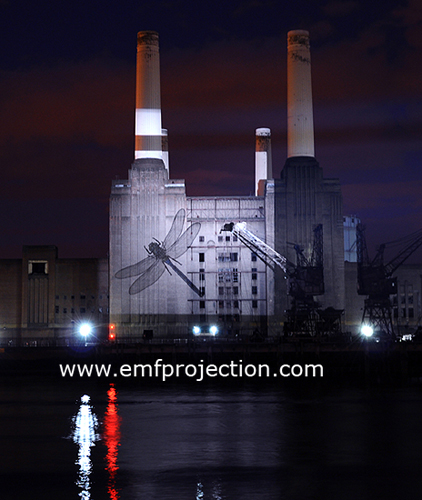Projection onto Battersea Power Station for OPAL water survey launch

Projection onto Battersea Power Station for OPAL water survey launch
Giant image of frogs projected onto Battersea Power Station in London for the launch of the OPAL Water Survey in May 2010
Giant frogs and dragonflies covered Battersea Power Station in London last night for the launch of the OPAL Water Survey, a national initiative to get people to explore England’s lakes and ponds, collecting valuable scientific information along the way. Anyone can take part in the Open Air Laboratories (OPAL) Water Survey by looking out for creatures such as dragonfly larvae and water beetles, and taking water measurements such as the pH (acidity) level of the water. Upload your findings to the website and then the results will be used to help scientists and conservationists better protect these vulnerable freshwater habitats.OPALOPAL is an England-wide initiative to inspire and support communities to explore and protect their local environment, with the help of some of the country’s leading scientists. The 16 partners include the Natural History Museum, The Open University, Imperial College and 9 regional universities.Damaged and neglected habitats

Battersea Power Station Projections for Pond Survey Launch
Giant dragonflies on Battersea Power Station. Look out for dragonfly larvae in the water survey
The majority of ponds and lakes are either damaged by pollution or neglected, making them one of the most threatened environments in the landscape, recent research by Open Air Laboratories (OPAL) and Pond Conservation shows.Ongoing research is being carried out by an OPAL team from University College London (UCL) and their findings back up existing studies into the quality of England’s freshwaters by the Environment Agency.Dr Neil Rose, OPAL Water Centre, University College London (UCL), says, ‘England has thousands of lakes and ponds which play a vital role in protecting our freshwater plants and animals.’Although we know a lot about some of our larger, more famous lakes, there are huge gaps in our knowledge about the vast numbers of smaller waters dotted all over the landscape.’We need to know where the best sites are so we can protect them properly; and who knows what we might find once people start to take a closer look?’Garden ponds tooPeople with garden ponds are encouraged to take part as very little is known about these popular habitats. Dr Jeremy Biggs, Pond Conservation Director, explains. ‘Last year our Big Pond Dip took a detailed look at wildlife garden ponds to help us to understand more about these hugely abundant habitats. ‘There are between 2 and 3 million in Engli
via Battersea frog image launches OPAL water survey | Natural History Museum.

Battersea Power Station Projections for Pond Survey Launch
[/caption]






















































